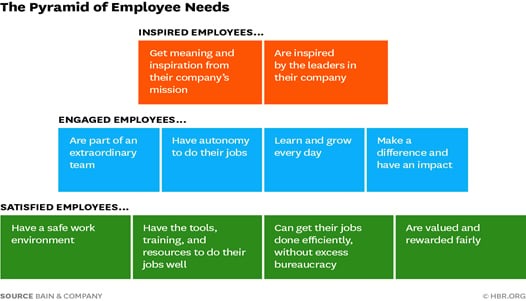As companies search for avenues to maximize their resources, research suggests that the secret to productivity may be as simple as keeping employees happy.
According to Forbes Coaches Council, companies now realize the positive impact of adopting a people-first approach, which assumes that what’s good for the employees is also good for the company. This implies that employees must also be treated as if they were customers.
A people-first approach sounds easy to do but implementing it requires leaders to be more dynamic and malleable in adopting people-centric practices to empower the workforce. In the client experience company, it is, after all, the people that elevate a company’s success and continued growth.
Forbes warned that neglecting this trend can have significant consequences. For instance, when leaders do not align themselves with their team members’ wants and needs, they may lose good talent. Cumulative growth is also stunted when employees are handed tasks that do not correspond to their strengths. In short, the responsibility in a people-first environment starts at the top and ends when leaders can meet their people and function as a unit, instead of seeing them as mere workers.
Across the board, one of the benefits of a people-centric approach is the significant increase in overall employee performance. When employees are healthy and valued, it shows through their quality of performance. It is a mutually beneficial relationship for both the employer and employee.
Power to the People
In a study from the University of Warwick, happy employees are 12 percent more productive in the workplace. It also showed that industry-leading companies like tech giant Google have gained the rewards of adopting a people-first approach. Google employees gained over 37% boosted employee satisfaction after investing in employee support programs.
“The driving force seems to be that happier workers use the time they have more effectively, increasing the pace at which they can work without sacrificing quality,” lead researcher Dr. Daniel Sgroi said.
However, having happy employees takes a lot more than just circulating a few positive posters, handing out incentives, and throwing parties. Adapted from Abraham Maslow’s hierarchy of needs, you must look beyond the satisfaction of your employees and seek to elevate them at an inspired level.

A Harvard Business Review post by Eric Garton and Michael Mankins cites that managers should never assume that salaries are the be-all and end-all for the employees. While a higher pay grade is important, employee engagement encompasses a wider spectrum of factors. Therefore, corporations must look at their organizational structures and chip away unnecessary elements, unhealthy processes, and mandatory routines that ultimately—and unnecessarily—impede their employees’ satisfaction.
Elevate Experiences
At Circa Logica Group, achieving an inspired level of engagement with their employees is a top priority. They are quick to adapt their practices to create an amazing work environment that emphasizes a rewarding process just as much as the tangible result.
People-centered programs are some ways CLG fosters a supportive work environment that celebrates diversity and inclusion, elevating experiences daily.
So, if you’re lagging on your clients’ needs, then take a second look, you might be neglecting your people.

